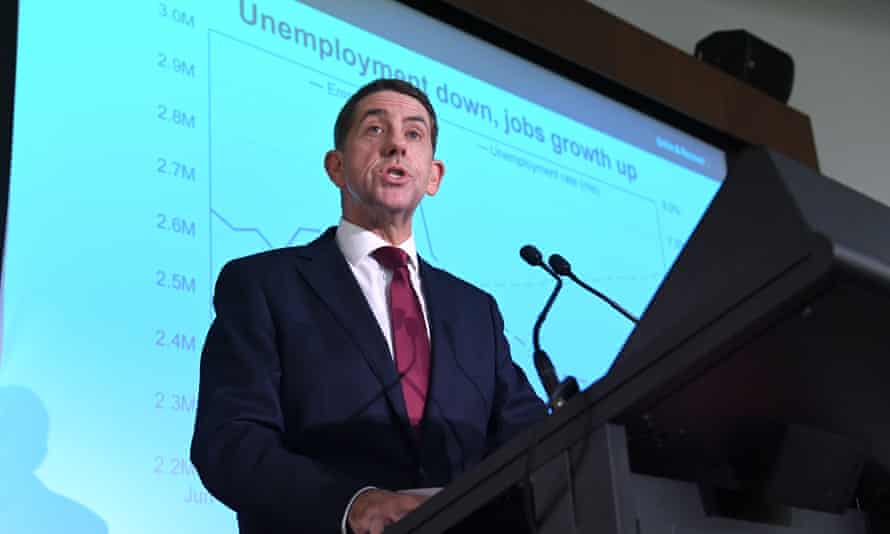Extract from The Guardian
Treasurer Cameron Dick says budget, which boasts $2bn fund to develop clean energy, vindicates state’s Covid lockdowns

Last modified on Tue 15 Jun 2021 14.26 AEST
The Queensland government anticipates its state-owned power generators – mostly coal-fired power stations – will be unable to pay dividends to taxpayers within two years, due to an influx of renewables and lower power prices.
One of the most significant measures in the state’s budget, handed down on Tuesday, was a “watershed” $2bn fund that would build renewables and further develop industries linked to clean energy.
The budget is being sold by the treasurer, Cameron Dick, as a vindication of Covid lockdowns, border closures and the decision to use debt to fund the economic recovery.
Dick said that since the onset of the pandemic, Queensland’s job numbers have grown by 253,000 and the state’s economy has outperformed the rest of the country.
“In this budget we are reducing our debt because our economy is growing strongly, because our jobs are coming back and because it makes sense to rebuild our borrowing capacity.
“In future, debt may well rise again, to respond to another crisis … or to build the infrastructure of our state.
“As we see the commonwealth government engaging in a borrowing spree that dwarfs anything the state might do, it is my hope that [the opposition] and those in the media finally come to grips with the fact that debt is not a dirty word.”
Dick projects Queensland will return to surplus in 2024-25.
In the process, perhaps inadvertently, the budget highlights how the state’s future planning is being gradually decoupled from once-critical revenue streams – including coal royalties and dividends from power companies. Both have been frequent boasts by the fossil fuel sector to underscore their importance to the state.
Total revenue is predicted to increase $11.7bn over the forward estimates. At the same time the state projects its royalties income – mostly from mining – will be down $767m.
Those numbers only tell part of the story. In 2019-20, Queensland made $3.52bn from royalties paid by coal exporters. The following year – in part due to the pandemic – the state made less than half that amount ($1.75bn).
While treasury’s projections show coal exports bouncing, they are not predicted to ever return to heady pre-2020 levels.
Power generation and electricity networks have long been a reliable income stream for the state – in the 2017-18 financial year these returned $1.6bn to the state’s coffers. In three years, 90% of the state’s dividends from its power companies has evaporated – in 2020-21, the figure is estimated at $152m.
By the 2022-23 financial year, Queensland no longer expects to receive any dividends from its power generators.
“The entry of significant volumes of renewables boosting supply into the grid [has put] sustained downward pressure on wholesale electricity prices,” the budget papers say.
“Given the soft market outlook, dividends from the [energy] generation sector have not been assumed in the later years of the forward estimates.”
On the morning of the budget, the Queensland Conservation Council released an analysis that showed the state’s coal-fired power stations will become loss-makers from 2023.
The state’s landmark spend on renewables – a commitment of $2bn – has been broadly well-received. However, Queensland continues to insist each of its coal-fired power stations will remain operational until their scheduled closure dates – in most cases decades away – even as its state-owned power companies begin to confront the rapid pace of market transition.
The failure and substantial damage of a unit at the Callide C coal-fired power station last month – resulting in blackouts across the state – has already hastened calls for more aggressive measures to wind down coal generation, and to begin in earnest plans to support the transition of workers and communities.
“The Queensland government can no longer rely on its coal power stations to bring in revenue,” the QCC director, Dave Copeman, said
“Their profitability is tanking and creating a giant budget black hole.
“Refusing to acknowledge the transition to renewable energy and the looming profitability crisis for coal power will only lead to uncertain futures for workers, and high carbon emissions.”

No comments:
Post a Comment